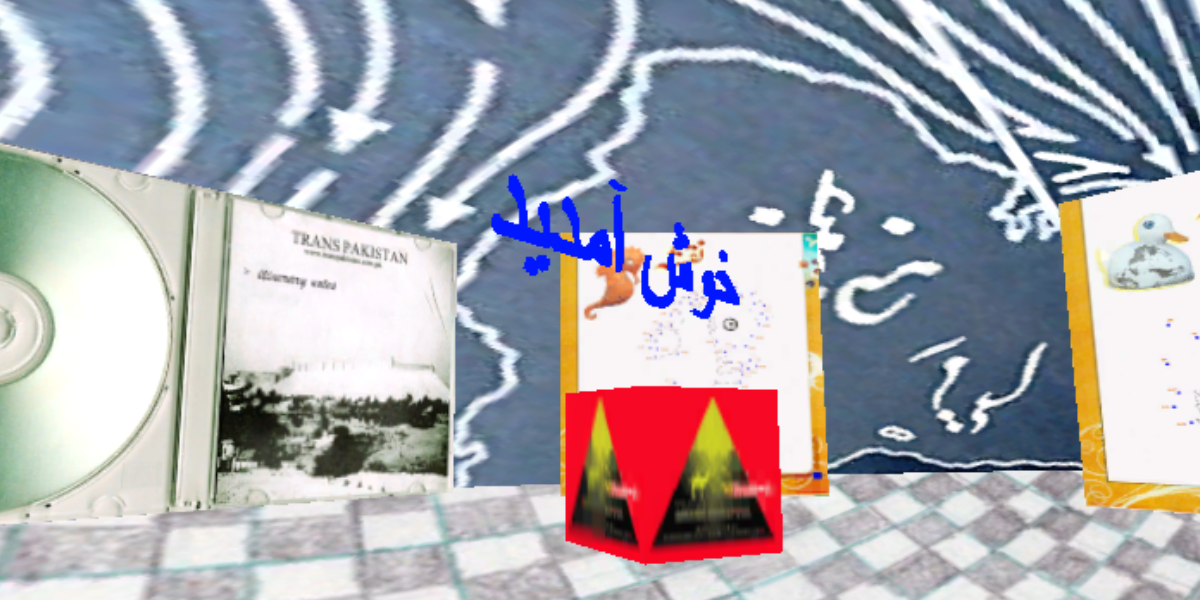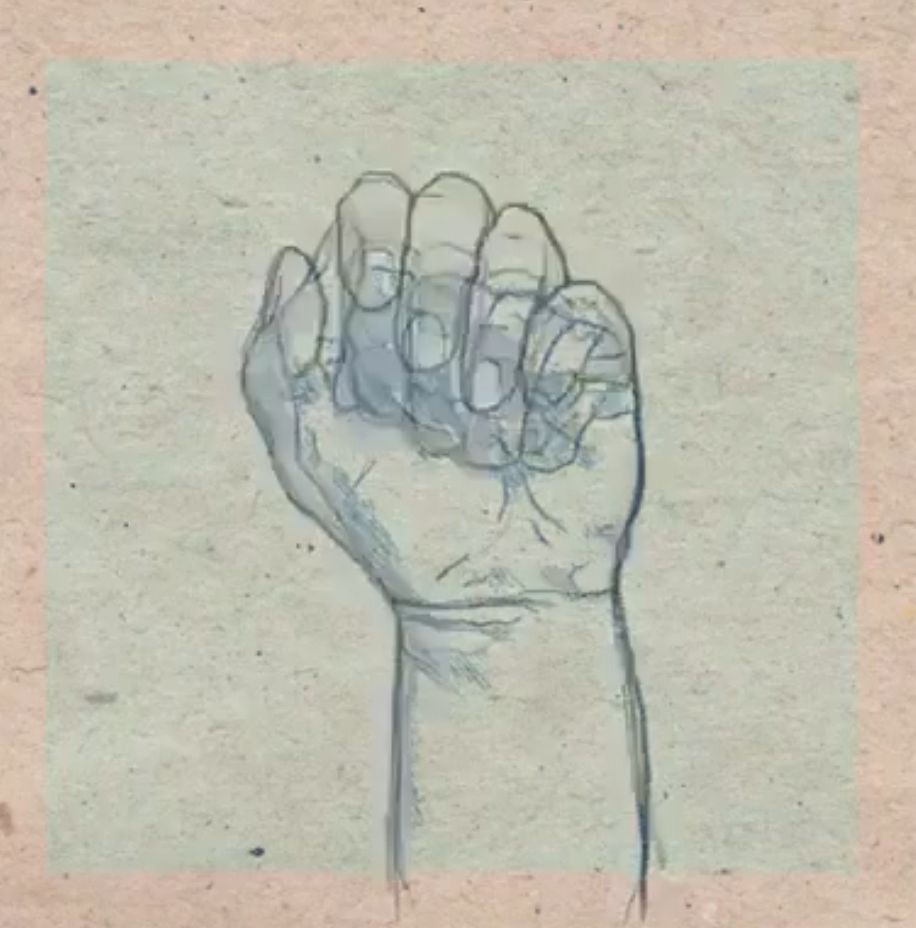Umber Majeed is a Pakistani-American multidisciplinary visual artist and educator. Spring Magazine caught up with Umber to discuss her exhibition and performance around the politics of place and technology.
Spring: How did you first get involved in the Mayworks Festival?
Umber Majeed: I was introduced to Mayworks as a partner organization when preparing for an upcoming solo exhibition through Contact Festival 2024. After many conversations with the curator I was working with (Karina Iskandarsjah), we decided to withdraw from the Contact Festival [as a protest against its main sponsor, Scotiabank, which has a large stake in Elbit Systems, a weapons company complicit in the genocide of Palestinians].*
After the fallout, the Mayworks team was interested in continuing to support my project. This included a virtual performance alongside SAVAC (South Asian Visual Arts Centre) as well as a digital exhibition sharing ongoing animations, interactive web environment, and a Mindmap on [the collaboration software] Miro— related directly to the upcoming virtual performance. I am so thankful to the Mayworks Team for giving me an opportunity to share my research and pertinent thoughts on labour and urban design in South Asia.
*Umber discusses more about her decision to withdraw from the Contact Festival in the following link: https://www.theartnewspaper.com/2024/05/17/artists-withdraw-contact-photography-festival-scotiabank-investment-elbit-systems
Your digital exhibition, DIL DIL TRANS-PAKISTAN (HEART, HEART TRANS-PAKISTAN), is currently online for the Mayworks 2024 Festival, can you tell me more about why you chose this medium (animations, digital art) and this display method (free, online)?
Umber: Long Live Trans-Pakistan is an ongoing digital project I have been working on for the last five years. There have been different iterations and installations including a single channel animation, lecture performance, [Augmented Reality] (AR) installation, and interactive web environment. The use of technology and accessibility is the medium and conceptual core of the project. More specifically, technology culture in the Global South– what many would consider flawed infrastructure. I’m interested in the dissemination and accessibility of media consumption of low income city dwellers through piracy; there’s a re-creation of the urbanscape in the glitch, pixelation, and subaltern aesthetics. For example, pirated Bollywood music cassettes used to be available to lower income communities and rippled into immigrant communities into the United States. The graphic designers in Jackson Heights, Queens, NY today, use pirated Photoshop programs to draw out Urdu, Bangla, or Hindi typography that they used back at home and recreated them in newspapers and posters plastered across Queens, NY. The entity I have recreated -Trans-Pakistan- is trying to access that economy and aesthetic [and] re-insert it into sleek art installations, virtual performances and exhibitions.
DIL DIL TRANS-PAKISTAN (HEART, HEART TRANS-PAKISTAN) outlines various phases and interests in the world-building of Trans-Pakistan— a digitally revitalized tourism company, formerly owned by my maternal uncle in Rawalpindi, Pakistan. Trans-Pakistan closed down in the early 2000s due to the implications of the War on Terror in Pakistan. My interest is in using the façade of tourism, to investigate various case studies on urban development and land politics in Pakistan and regionally.
Can you tell us more about the themes for your performance on May 11, 2024 – TRANS-PAKISTAN ZINDABAD (LONG LIVE TRANS-PAKISTAN)?
Umber: Speculative fiction, collage, and digital interface are consistent formal and conceptual tools within my interdisciplinary art practice. I use architectural design and historical events specific to Pakistan to negate convoluted understandings on nationalism, community, and self. I am interested in temporal disjunctures of South Asia’s urban scape as a catalyst to propose alternative futures.
This virtual performance was a lecture and visual presentation followed by a wonderful panel discussion with writer, Asad Alvi and academic/visual artist, Hiba Ali. Within the performance, I embodied a Trans-Pakistan tour agent/tour guide narrating the “services” offered by Trans-Pakistan. It merged speculative premises and very real political realities on the history of land acquisition in Pakistan and the role of the Overseas Pakistani in gentrifying major metropolitan cities in Pakistan. Within the visual presentation there were images, videos, and research materials displayed of imagined digital realities that could be projected into contested real space through technologies like Augmented Reality. Conceptually, the digital services offer the laborers and non residents the opportunity to enter the housing community on different terms as “tourists” which would circumvent the security apparatus created to exclude ‘non residents’.
Can you tell us more about Bahria Town, one of the inspirations for the work?
Umber: Bahria Town is a real-estate development company that owns, develops, and manages properties across Pakistan. Combining the various housing projects in major Pakistani metropolitan cities. Starting from the early 2000s, this privatized housing corporation houses upper middle- and high-income Pakistanis. Bahria Town has been accused and charged with land-grabbing by the state. This global enterprise houses miniature and large-scale reproductions of a Sphinx, Eiffel Tower, and Taj Mahal, etc. Bahria Town represents the ideals of the Overseas Pakistani, amenities of the West and the identity of the Islamic Republic of Pakistan.
Through my project I was interested in the urban layout of Bahria Town, specifically the areas of gathering by large scale reproductions of the Eiffel Tower, etc. as a gathering site for non residents to explore the wonders of the world, brought to you by Bahria Town. The formation of these simulations also give way to the agenda of heteronormativity and Islamic Republic. In the remaking of Trafalgar Square in Karachi and Lahore, they renamed it “Tawheed Block” (meaning one-ness of God).
How do these private developments affect workers’ movements and intersect with the other topics your work explores, e.g. capital, race, sexuality, and gender?
Umber: I am interested in using artistic tools and the art community in Pakistan and abroad to research this controversial content. As a Pakistani-American femme I work as an outsider on the inside, I am able to understand the intricacies within this context.
Trans-Pakistan is interested in pointing to how Bahria Town’s infrastructure allows for certain flow of movement, specific peoples of a particular economic status, while also inserting alternative local narratives of place. In the early 2000s, what was considered the city of Lahore was expanding into smaller villages in the outskirts due to national security threats. In the last few years, Bahria Town has paid reparations to the Government of Pakistan for ousting villagers from their land (sometimes their only source of safety). Those that work for Bahria Town as drivers and domestic labour were once the residents of these villages before the arrival of Bahria Town. The only relationship that many people have is as a worker for Bahria Town; even artisans are commissioned by Bahria Town to create small-scale garden sculptures. This kind of craftsmanship is an entry point for Trans-Pakistan as we seek to transform the dynamic of the resident/non resident with the inclusion of the ‘tourist’— simulating an experience to be had re entering the housing community with a walking tour phone app with augmented reality experience.
Since smartphones are the only devices that non residents can take through Bahria Town security, can a Trans-Pakistan walking tour app allow for a subversive way for non residents to gather and content this kind of occupation within semi public spaces. However, how would it function as a collective group experience through our individual technological devices?
Umber’s exhibition, DIL DIL TRANS-PAKISTAN (HEART, HEART TRANS-PAKISTAN) is online until May 31, 2024. View the exhibition here: https://mayworks.ca/festival-2024/trans-pakistan
Discover more about the 2024 Festival and Mayworks’ ongoing programming here: https://mayworks.ca/2024-festival
Did you like this article? Help us produce more like it by donating $1, $2, or $5. Donate


